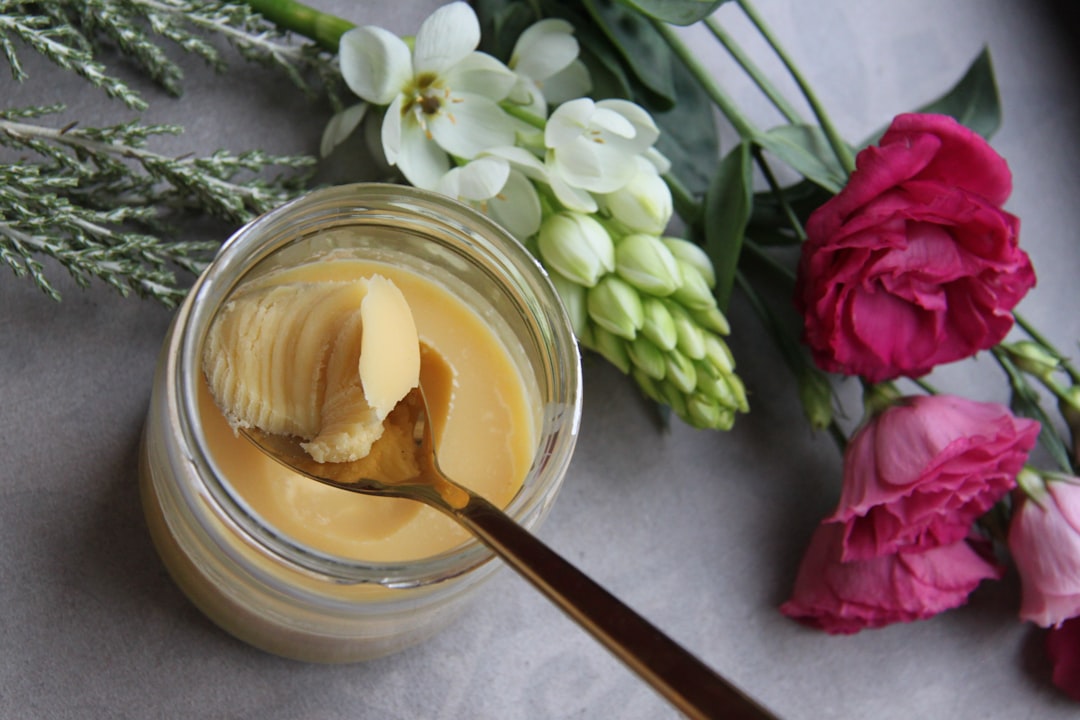As loving pet parents, we always want to give our furry friends the best. This often leads us to wonder if the foods we enjoy are safe for our canine companions. Ghee, a clarified butter with a rich, nutty flavor, has gained popularity for its purported health benefits. But can dogs eat ghee? Let’s dive into the details and find out!
Can Dogs Eat Ghee? The Short Answer
Yes, in moderation, ghee is generally safe for dogs. However, as with any new food, it’s important to introduce it slowly and consider your dog’s individual needs and sensitivities. Ghee is essentially butter with the milk solids removed, making it potentially easier to digest than regular butter, especially for dogs with lactose sensitivities.
Health Benefits of Ghee for Dogs
Ghee offers several potential benefits for your canine pal, primarily due to its healthy fat content and the removal of lactose and casein (milk proteins). However, it’s crucial to remember that ghee is not a necessary component of a dog’s diet and should only be given as an occasional treat.
Potential Benefits:
Here’s a closer look at the possible advantages:
- Healthy Fats: Ghee is rich in healthy fats, including Omega-3 and Omega-9 fatty acids. These can contribute to a shiny coat, healthy skin, and overall well-being.
- Easier Digestion: Because the milk solids are removed, ghee is often easier for dogs to digest than butter, especially those with mild lactose intolerance.
- Vitamin Boost: Ghee contains fat-soluble vitamins like A, D, E, and K, which are important for various bodily functions, including immune support and bone health.
- Palatability Enhancer: A small amount of ghee can make bland dog food more appealing, which can be helpful for picky eaters or dogs recovering from illness.
- Joint Support: Some believe the fatty acids in ghee may help lubricate joints and reduce inflammation, potentially benefiting dogs with arthritis or other joint issues.
Potential Risks of Ghee for Dogs
While ghee offers some potential benefits, it’s essential to be aware of the risks associated with feeding it to your dog.
Possible Drawbacks:
- Weight Gain: Ghee is high in calories and fat. Overfeeding can quickly lead to weight gain, which can contribute to a range of health problems, including diabetes, heart disease, and joint problems.
- Pancreatitis: A sudden increase in fat intake can trigger pancreatitis, an inflammation of the pancreas, especially in dogs prone to the condition. Symptoms include vomiting, diarrhea, abdominal pain, and loss of appetite.
- Allergies and Sensitivities: Even though most milk solids are removed, some dogs may still be sensitive to ghee. Watch for signs of allergic reactions, such as itching, skin rashes, digestive upset, or ear infections.
- Digestive Upset: Introducing too much ghee at once can lead to diarrhea or vomiting, even in dogs without known sensitivities.
How to Introduce Ghee to Your Dog Safely
If you decide to give your dog ghee, do so cautiously. Follow these guidelines to minimize the risks:
Tips for Safe Introduction:
- Start Small: Begin with a very small amount – no more than 1/4 teaspoon for small breeds and 1/2 teaspoon for larger breeds.
- Mix It In: Add the ghee to your dog’s regular food rather than offering it on its own.
- Observe Carefully: Monitor your dog for any signs of digestive upset, allergic reactions, or changes in behavior.
- Limit Frequency: Ghee should be an occasional treat, not a regular part of your dog’s diet. Limit servings to once or twice a week at most.
- Consider Your Dog’s Health: If your dog has a history of pancreatitis, obesity, or food sensitivities, consult your veterinarian before introducing ghee.
- Use High-Quality Ghee: Opt for organic, grass-fed ghee whenever possible to minimize potential exposure to pesticides or other contaminants.
Ghee vs. Butter for Dogs
Ghee is often considered a better option than butter for dogs because it contains significantly less lactose and casein, the milk proteins that can cause digestive issues. However, both are high in fat and should be given sparingly. If your dog tolerates butter well, ghee might offer a slightly easier-to-digest alternative. If your dog reacts poorly to butter, it’s best to avoid ghee altogether.
Frequently Asked Questions
How much ghee can I give my dog?
Start with a very small amount (1/4 teaspoon for small breeds, 1/2 teaspoon for large breeds) and observe your dog for any adverse reactions. Limit servings to once or twice a week at most.
Is ghee good for a dog’s skin?
The healthy fats in ghee may contribute to healthier skin and a shinier coat, but it’s not a guaranteed solution for skin problems. Consult your veterinarian for specific recommendations if your dog has skin issues.
Can puppies eat ghee?
It’s best to avoid giving ghee to puppies unless specifically advised by your veterinarian. Puppies have sensitive digestive systems, and the high fat content of ghee could cause problems. A balanced puppy food is typically sufficient to meet their nutritional needs.
What are the alternatives to ghee for dogs?
If you’re looking for healthy fats to supplement your dog’s diet, consider adding small amounts of fish oil or flaxseed oil. These are excellent sources of Omega-3 fatty acids and are generally well-tolerated by dogs. Always consult your veterinarian before adding any new supplements to your dog’s diet.
In conclusion, ghee can be a safe treat for dogs in moderation, offering potential benefits such as healthy fats and easier digestion compared to butter. However, it’s crucial to introduce it slowly, monitor your dog for any adverse reactions, and limit servings to avoid weight gain or other health problems. Always prioritize your dog’s overall health and consult with your veterinarian before making any significant changes to their diet.

